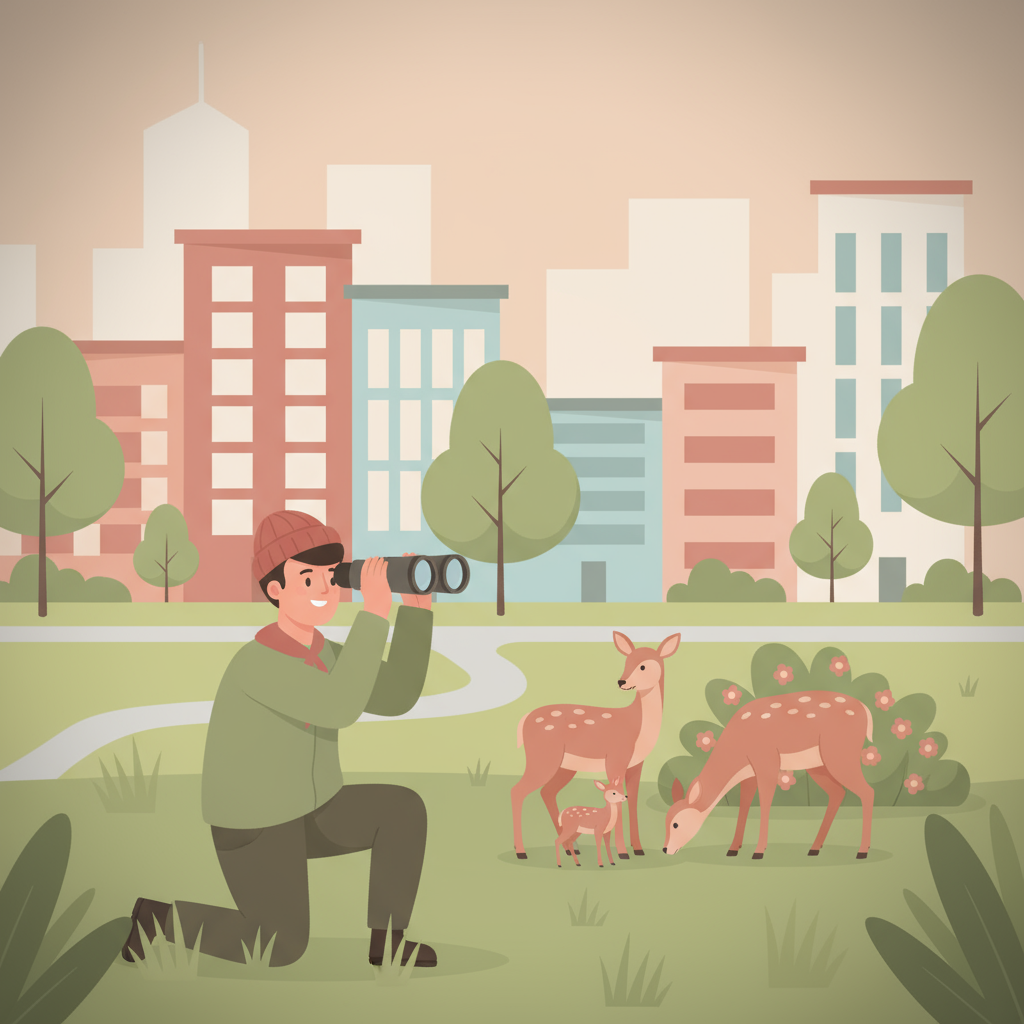Living in the city often means missing out on the incredible wildlife hidden in plain sight. For urban scouts, noticing urban wildlife can feel like a challenge with all the noise and hustle around.
The good news is that by adopting a few simple daily habits, you can sharpen your senses and start spotting the many animals sharing the city with you. Whether birds, squirrels, or even foxes, urban wildlife is closer than you think!
This article will guide you through practical and easy habits that will help you notice urban wildlife more effortlessly and respectfully, deepening your bond with your urban environment.
Your 3 Daily Habits To Help Notice Urban Wildlife
Habit 1 — Slow Down and Tune In
Why: When you rush through your day, it is easy to miss the subtle sounds and movements of urban wildlife. Slowing down gives you a chance to notice the small details and animal activity around you.
How: Set aside a few minutes each day to take a short walk or sit quietly in a park or green space nearby. Focus on what you hear, see, and smell. Close your eyes for a bit and try to identify different bird calls or rustling sounds.
Cue: Use your daily commute or break times as your reminder to slow down and observe.
Habit 2 — Choose The Right Spot and Time
Why: Wildlife activity varies by location and time of day. Picking the right places and times boosts your chances of witnessing urban animals.
How: Visit city parks, riversides, or less trafficked streets during early morning or twilight hours when many animals are most active. Learn which creatures are common in your area and when they’re likely to appear.
Cue: Plan your daily outdoor time or exercise around these prime wildlife spotting windows.
Habit 3 — Use Your Senses and Tools
Why: Relying just on sight is limiting. Your hearing and even smell can alert you to wildlife presence. Tools like binoculars help you see without disturbing animals.
How: Practice listening attentively during your outdoor time. Bring compact binoculars to enhance distant views. Avoid sudden movements or loud noises to keep animals comfortable.
Cue: Keep your binoculars and a small notebook or phone app handy to record your sightings and sounds.
Week 1 Schedule
| Day | Activity |
|---|---|
| Monday | Take 10 mins slow walk in nearby park morning or evening. Listen for bird calls. |
| Tuesday | Observe a tree or green space quietly for 5 minutes. Note any animals or signs. |
| Wednesday | Try binoculars for the first time spotting birds or squirrels from a distance. |
| Thursday | Read about common urban wildlife in your city. Note active times for next visit. |
| Friday | Revisit your favorite green spot at dawn or dusk. Look for different animals than earlier in the week. |
| Saturday | Take a longer 20-minute walk in a less busy area, practicing slow observation and listening. |
| Sunday | Reflect on your week’s observations. Share interesting findings with a friend or journal. |
Troubleshooting
Barrier: Too busy or distracted to slow down and observe.
Fix: Use scheduled cues such as break times or your commute to consistently practice noticing urban wildlife, making it part of your daily rhythm with the focus_keyword.
Barrier: Difficulty identifying animals or signs.
Fix: Use smartphone apps or simple field guides to help with identification and boost your confidence when trying to notice urban wildlife.
Barrier: Feeling close proximity to people scares animals away.
Fix: Find quieter spots or times (early morning or evening), stay still and silent, and use binoculars to observe safely from a distance.
FAQs
Q: How do I start noticing urban wildlife if I have never tried before?
A: Begin with Habit 1 — slow down and tune in during your usual daily routines. Even a few focused minutes outside can help you notice urban wildlife.
Q: Is it okay to feed urban wildlife to encourage sightings?
A: It is best to avoid feeding wildlife. Feeding can put animals at risk by changing their natural behaviour and diet. Respectful observation at a distance is healthier for them and you.
Q: What are common urban animals that I might see?
A: Common urban wildlife includes birds like pigeons, crows, and sparrows; squirrels; bats at dusk; and sometimes foxes or raccoons depending on your city.
Tracking & Motivation Tips
To stay motivated to notice urban wildlife, keep a journal or use a smartphone app to record your daily sightings and experiences. Celebrate small discoveries and gradually build a richer picture of the animals around you. Sharing your observations with friends or online wildlife groups can make the process more fun and rewarding, keeping your focus_keyword practice engaging and consistent.
Key Takeaways To Notice Urban Wildlife
Noticing urban wildlife is achievable by making simple daily habits part of your routine. By slowing down to observe, choosing the right spots and times, and using your senses and tools thoughtfully, you can enjoy a richer connection with the animals sharing your city. Remember to respect wildlife space and avoid feeding to keep them safe. With patience and practice, noticing urban wildlife will bring unexpected joy to your everyday life.
Join the Waitlist
Ready to put these habits into action? Dayspire helps you reach any goal with simple daily habits. Join the waitlist now to be the first to get invited to Dayspire!




